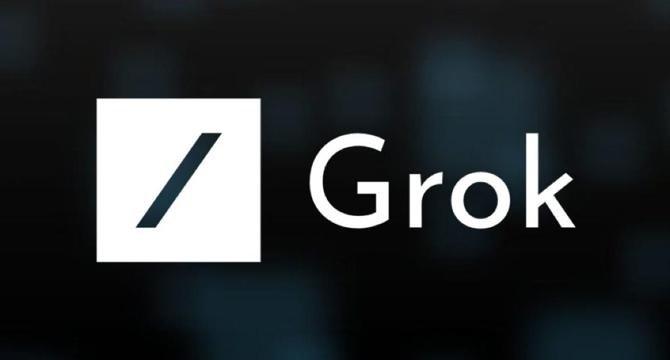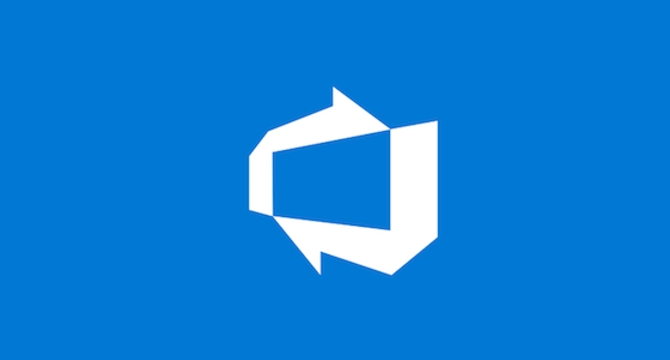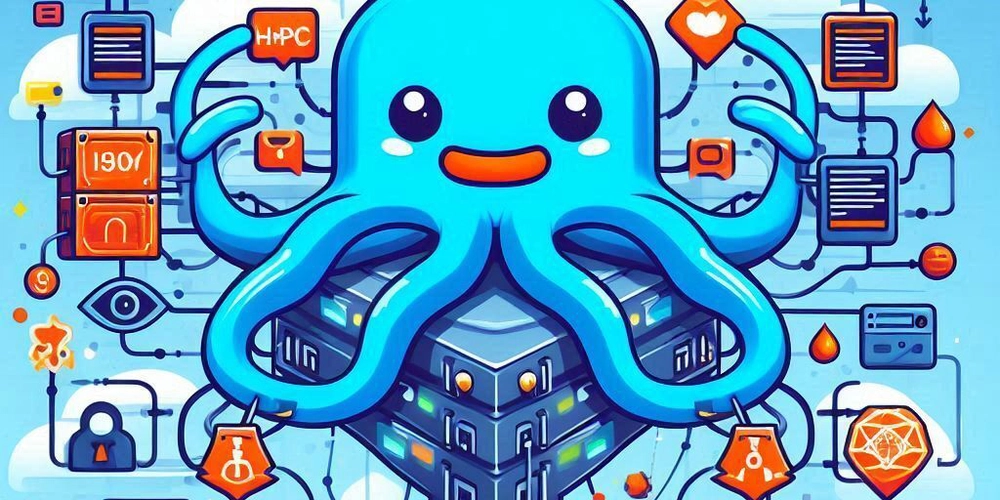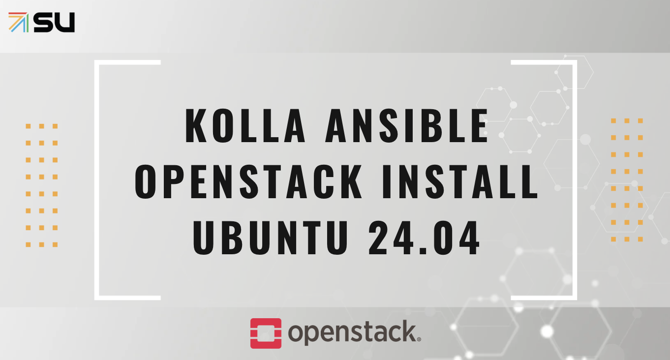Devops News
Medium
420

Image Credit: Medium
HumanGov: Automating HumanGov SaaS Application Build and Deployment Process on Kubernetes with…
- The article discusses automating the build and deployment process of the HumanGov SaaS application on Kubernetes using AWS services like CodeCommit, CodeBuild, CodePipeline, and ECR.
- Key components include setting up CI/CD pipelines, creating Kubernetes configurations, containerizing the application with Docker, and rigorous testing in the AWS cloud environment.
- Continuous Integration (CI) enhances software development by automating builds and tests, while Continuous Deployment (CD) ensures that every change is tested and ready for deployment.
- Jenkins is highlighted as an open-source automation server for CI/CD, featuring extensive plugin support and pipeline automation.
- AWS services like CodeCommit, CodePipeline, and CodeBuild offer managed source control, continuous delivery, and continuous integration, streamlining the deployment process.
- The article guides through steps to push source code to CodeCommit, set up CI/CD pipelines, configure AWS CodeBuild for deployment, and integrate testing using AWS services.
- Further steps include adding a test stage, deploying to production and staging environments, incorporating manual approval stages, and corresponding infrastructure provisioning using Terraform.
- The process entails creating deployment projects, updating build specifications, validating VPC settings, and executing deployments on Kubernetes clusters.
- The article emphasizes the benefits of automation in reducing errors, accelerating releases, and enhancing collaboration in software development workflows.
- Finally, cleanup steps involve deleting CodePipeline, Build projects, Kubernetes resources, and the EKS cluster.
Read Full Article
25 Likes
The New Stack
344

Image Credit: The New Stack
ToolHive Simplifies MCP Server Orchestration with Kubernetes
- ToolHive is a command line utility developed by StackLok to manage Multiple Context Protocol (MCP) servers using Kubernetes and containers.
- Setting up and maintaining MCP servers can be complex and challenging due to limited tooling and documentation, but ToolHive simplifies this process.
- Kubernetes provides a foundation for isolating and managing MCP instances, addressing security concerns with features like role-based access control and secrets management.
- ToolHive acts as the bridge between Kubernetes and AI agents, allowing for streamlined management of MCP servers in a secure operational environment.
Read Full Article
20 Likes
Kubernetes
371

Kubernetes v1.33: Mutable CSI Node Allocatable Count
- Kubernetes v1.33 introduces an alpha feature called mutable CSI node allocatable count for dynamically updating reported maximum volume capacity on nodes.
- This feature enables Container Storage Interface (CSI) drivers to adjust and report node attachment capacities at runtime, improving pod scheduling accuracy in Kubernetes.
- With MutableCSINodeAllocatableCount feature gate enabled, CSI drivers can either periodically refresh the node's capacity or trigger immediate updates on volume attachment failures.
- Users can experiment with this alpha feature in Kubernetes v1.33 cluster by enabling the feature gate and configuring CSI driver settings for improved pod placement reliability.
Read Full Article
22 Likes
Silicon
219

Image Credit: Silicon
Microsoft To Host Elon Musk’s Grok AI Chatbot – Report
- Microsoft is planning to host Elon Musk's Grok AI model, a move that might be unsettling for OpenAI, a company Musk is in legal dispute with.
- Microsoft, a significant backer of OpenAI, is preparing to host Grok AI model on Azure cloud service, potentially making it available to developers and within Microsoft's own products.
- Elon Musk has been at odds with OpenAI and its CEO, Sam Altman, over various legal matters, including OpenAI's restructuring into a for-profit business and Musk's attempts to acquire the non-profit.
- The tensions between Musk, OpenAI, and Microsoft have led to a series of legal battles and public disputes over the direction and principles of artificial intelligence development.
Read Full Article
13 Likes
Discover more
- Programming News
- Software News
- Web Design
- Open Source News
- Databases
- Cloud News
- Product Management News
- Operating Systems News
- Agile Methodology News
- Computer Engineering
- Startup News
- Cryptocurrency News
- Technology News
- Blockchain News
- Data Science News
- AR News
- Apple News
- Cyber Security News
- Leadership News
- Gaming News
- Automobiles News
Dev
259

Image Credit: Dev
Kubernetes 1.32: Real-World Use Cases & Examples
- Kubernetes 1.32 release, codenamed 'Penelope', focuses on enhancing efficiency, observability, and manageability of workloads.
- Practical examples include Dynamic Resource Allocation (DRA) Enhancements for GPU allocation, Auto-Removal of PVCs in StatefulSets for cleanup, and Graceful Shutdown for Windows Nodes to handle shutdown routines.
- New features like Change Block Tracking (CBT) for faster backups, Pod-Level Resource Limits for better resource sharing, and Enhanced Observability with /statusz and /flagz for monitoring component health have been introduced.
- Kubernetes 1.32 provides solutions for AI/ML efficiency, storage hygiene, Windows reliability, and observability, addressing common challenges in managing complex workloads.
Read Full Article
15 Likes
The New Stack
438

Image Credit: The New Stack
Gateway API or Ingress: A Developer’s Guide to Kubernetes Routing
- The Kubernetes Ingress API, traditionally used for managing external traffic routing, often required complex annotations and lacked advanced capabilities, leading to the development of the more powerful and standardized Gateway API.
- The Gateway API is a collection of Custom Resource Definitions that provide a structured approach to configuring L4 and L7 routing, aiming to streamline traffic management and promote consistency across implementations.
- Key components of the Gateway API include GatewayClass, Gateway, and Route types, allowing for role-oriented management of network infrastructure by platform operators and application developers.
- The Gateway API's design principles have also influenced the handling of internal service-to-service (East-West) traffic, leading to the GAMMA initiative for unified configuration of external ingress and mesh traffic within Kubernetes.
- For developers, the Gateway API offers greater control over routing logic using HTTPRoute and other Route types, enabling complex configurations for traffic handling in a standardized manner.
- Adopting the Gateway API may require a learning curve due to its multi-resource model and dependency on CRDs, but it offers enhanced portability, flexibility, and control over network traffic management in Kubernetes environments.
- The Gateway API presents a significant advancement in Kubernetes networking, providing a comprehensive solution for managing external and internal traffic with standardized, expressive, and role-oriented configuration capabilities.
Read Full Article
26 Likes
Microsoft
232

Image Credit: Microsoft
Introducing Azure DevOps ID Token Refresh and Terraform Task Version 5
- The recent updates introduced improve Workload identity federation (OpenID Connect) experience with Azure DevOps and Terraform on Microsoft Azure.
- ID Token Refresh allows requesting a new ID Token and exchanging it for an access token when the previous token has expired.
- Errors like AADSTS700024 occur when a token times out without ID Token Refresh.
- Terraform providers (azurerm, azapi, azuread) and azurerm backend were updated to support ID Token Refresh.
- Microsoft DevLabs Terraform Task Version 5 now supports ID Token Refresh by default.
- Configuring ID Token Refresh involves setting environment variables like ARM_OIDC_AZURE_SERVICE_CONNECTION_ID, ARM_OIDC_REQUEST_URL, and ARM_OIDC_REQUEST_TOKEN.
- The article provides examples of configuring ID Token Refresh with Azure CLI task and Terraform Tasks.
- Feedback is encouraged, and further improvements to reduce the number of required environment variables are being worked on.
- Acknowledgments are given to the teams and individuals involved in updating the providers, backend, and tasks for ID Token Refresh support.
- The updates are aimed at enhancing the Azure DevOps and Terraform experience, ensuring smoother authentication and access token management.
Read Full Article
14 Likes
Dev
246

Image Credit: Dev
Cloud Deployment Checklist: Tools, Automation, and Best Practices
- Cloud deployment is now a continuous process requiring speed, reliability, and scalability with structured checklists.
- Automation and AI-driven platforms have streamlined deployment workflows from manual to intelligent processes.
- Key steps include preparing applications, selecting the right deployment platform, automating workflows, setting up monitoring, ensuring security, planning for scalability, and post-deployment testing.
- Trusted tools like GitHub, Docker, Kubernetes, and AWS are recommended for each stage to ensure efficient and reliable cloud deployments.
Read Full Article
14 Likes
Dev
40

Image Credit: Dev
A Guide to Setting Up Local HTTPS Portals with Docker
- Local HTTPS portals provide secure connections within development environments by encrypting data transmitted between services.
- Benefits of using Local HTTPS Portals with Docker include enhanced security, realistic testing environments, streamlined development workflow, and collaboration with consistency.
- To set up local HTTPS portals with Docker, create a docker-compose.yml file defining services (frontend, API, https-portal), update the system's hosts file, and run the docker compose up -d command.
- Utilizing Docker for local HTTPS portals allows developers to secure services like frontend and API on specific ports, ensuring encrypted connections for improved development practices.
Read Full Article
2 Likes
Dev
36

Image Credit: Dev
Automated API Testing with Python: A Pragmatic Guide for Real-World Applications
- API testing is crucial in modern development environments, as it serves as the contract between systems.
- Automated API testing in Python can be achieved using the requests library and Python's built-in unittest framework.
- The project structure includes separate test logic, config, and runners for better organization and potential CI/CD integration.
- Python enables efficient API testing with tools like requests and unittest, offering flexibility for dynamic data and extensions like authentication and CI/CD integration.
Read Full Article
2 Likes
Dev
147

Image Credit: Dev
How I Created a CI/CD Pipeline for Deploying a Dockerized Slim-PHP App with Caddy
- The article discusses setting up a CI/CD pipeline for deploying a Slim-PHP application using Docker, GitHub Actions, and Caddy as the web server.
- The goal was to automate the deployment process whenever code is pushed to the main branch to ensure minimal downtime.
- The project involved setting up a Slim-PHP app and Caddy web server, with specific configurations in Dockerfile, Caddyfile, and docker-compose.yml.
- GitHub Actions were chosen for the CI/CD pipeline for its integration with GitHub and automation capabilities.
- The workflow involved installing dependencies, building assets, Docker image, logging into GitHub Container Registry, pushing the image, SSH deployment, and cleaning up old versions.
- Challenges included resolving issues with Caddy reverse proxy, creating new containers with health checks, managing Docker images on the server, and handling multiple versions in GHCR packages.
- Lessons learned highlighted the benefits of using Caddy for PHP developers, automation capabilities, and the time required for new containers to become healthy.
- In conclusion, the CI/CD pipeline automated the deployment process, saving time and ensuring a more robust application deployment.
- Automating deployment using this method is recommended for Dockerized PHP applications to streamline the process and reduce manual steps.
Read Full Article
8 Likes
Openstack
156

Image Credit: Openstack
Kolla Ansible OpenStack Installation (Ubuntu 24.04)
- Kolla Ansible provides production-ready containers and tools for OpenStack clouds, with a guide for Ubuntu 24.04 installation on a single host.
- Specifications for the installation include using private networks, DHCP IP values, and specific directory locations for disk images and volumes.
- Hardware requirements consist of virtualization-enabled BIOS, sufficient cores and memory, and specific NIC configurations.
- Pre-installation steps cover hardware enablement, Docker installation, NFS setup for Cinder, and Kolla Ansible installation procedure.
- Deployment involves bootstrapping servers, pre-deployment checks, and actual OpenStack deployment using Kolla Ansible.
- Post-installation tasks include setting up an admin user, creating projects, configuring security groups and quotas, and adding an Ubuntu image to Glance.
- Network setup involves creating networks, routers, and launching instances, with details on floating IPs for external access.
- The guide also covers securely accessing Horizon using a reverse proxy setup, troubleshooting steps, and additional FAQs for reference.
- The comprehensive guide ensures a successful deployment of a single-host OpenStack cloud on Ubuntu 24.04 with detailed steps and explanations.
Read Full Article
9 Likes
Dev
26

Image Credit: Dev
Embracing Open Standards in Cloud-Native Development
- Open standards are crucial in cloud-native development to ensure interoperability, scalability, and innovation while avoiding vendor lock-in.
- Key open standards in the cloud-native ecosystem include OCI, CNI, CRI, CSI, and SMI, each serving specific roles in containerization, networking, runtime, storage, and service mesh interfaces.
- CNCF project maturity levels categorize projects into Sandbox, Incubating, and Graduation stages based on adoption and criteria, guiding users in assessing project readiness and reliability.
- Adhering to open standards like OCI, CNI, CRI, CSI, and SMI empowers developers to build flexible and scalable applications, fostering innovation and collaboration in the cloud-native landscape.
Read Full Article
1 Like
Dev
318

Image Credit: Dev
Process Management in Red Hat Linux
- Processes are the backbone of performance monitoring and system control in Linux.
- Processes in Linux include running programs with unique PIDs, parent processes, and resource usage.
- Tools like ps, top, and htop help in viewing and monitoring processes in real-time and controlling them.
- Proper process management is essential for performance optimization, stability, and incident response in Linux systems.
Read Full Article
19 Likes
Dev
345

Image Credit: Dev
Day 10/ 30 Days of Linux Mastery: Managing Software Packages (DNF)
- Day 10 of 30 Days of Linux Mastery focuses on managing software packages using the dnf package manager.
- dnf, standing for Dandified Yum, is the package manager used in RHEL 9 systems for installing, updating, and removing software packages. It also handles repositories and software streams.
- Core dnf commands include installing, removing, updating, searching, viewing package info, listing installed packages, and cleaning cache. Auto-confirm prompts in scripts or labs using -y.
- Real-world scenarios demonstrate installing, confirming, and removing packages with dnf commands. Additionally, enabling specific software versions and checking package dependencies are covered.
Read Full Article
20 Likes
For uninterrupted reading, download the app